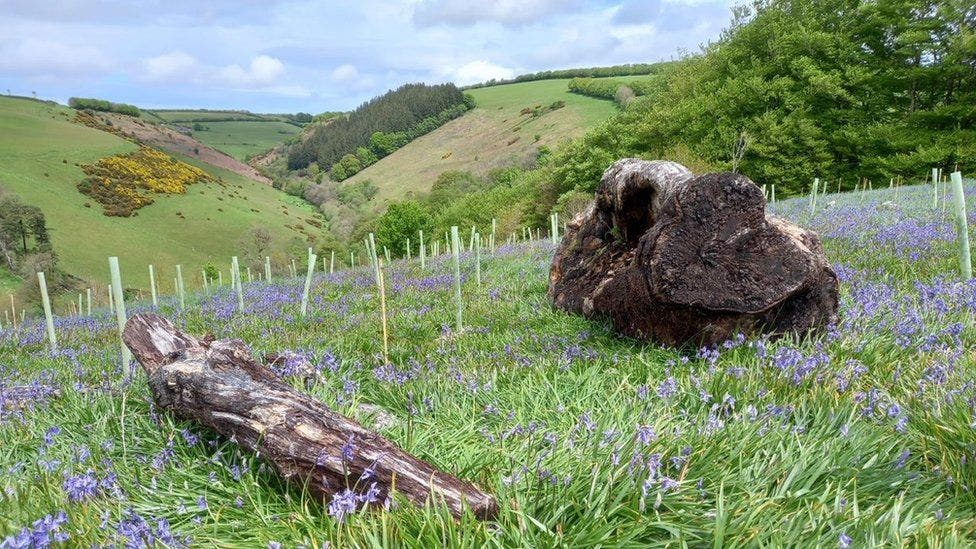Bunches of strikingly colored bluebells have flowered at Exmoor National Park, in southwest England. This wouldn’t normally be that exciting — but in this case, it seems the flowers were “sleeping” for centuries, biding their time and waiting for a chance to spring up.

Bluebells (the Hyacinthoides genus of flowers) are often found across the forests of the UK and Europe, but the area where they bloomed in Exmoor has been an exposed hilltop for centuries. Park authorities have been working on changing that, and they’re about halfway planting new trees to reforest the area.
Apparently, this reforestation has been disturbing the soil, because the bluebells started emerging and blooming apparently out of nowhere. Senior woodlands officer for Exmoor National Park Authority, Graeme McVittie explained:
“We had no idea there was going to be this huge display this spring. The bluebells must have persisted beneath the bracken for several hundred years since it last had a tree canopy.
“These are ancient woodland indicators, so we are in a sense re-creating the conditions for an ancient woodland.”
It’s not uncommon for flowers to go dormant when faced with adverse growing conditions, but usually, this happens over much shorter periods of time, like for instance during winter months, when perennial plants go dormant until spring. But flowers are increasingly showing an underestimated ability to survive in dormancy.

A previous study found that common garden flowers can remain dormant for at least twenty years, and seeds can withstand far longer periods but there is plenty we’re yet to uncover about plant dormancy. The bluebells likely resisted as bulbs before re-emerging once conditions were favorable. Jack Hunt, woodlands assistant at Exmoor, added:
“Since we’ve started controlling bracken and planting trees, the suppressed bulbs have re-activated, and flowering bluebells have carpeted the site.
For now, about 8,000 trees have been planted, including locally-grown sessile oaks, returning the local environment closer to what it was before it was managed by medieval Britons. The trees will provide protection and shade for the bluebells, likely ensuring that they’ll be able to thrive for years and years on.
“As our new trees grow, they’ll provide dappled shade and help to maintain and diversify the new woodland’s ground flora,” Hunt adds.
Was this helpful?



